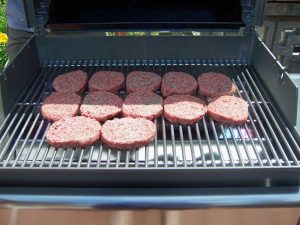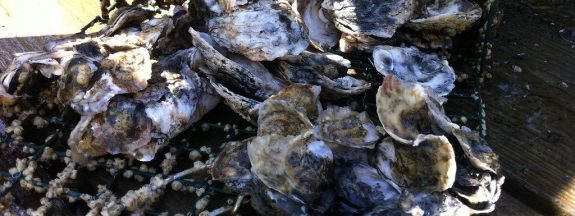By Jason Masters
Environmental Health Director

Pork, Pot Luck & Pudding… Oh My!
A
Q: Dear Jason,
Let me start by saying I did not grow up eating large amounts of pork and other ground sausage-like meats. Moreover, when I went off to college I became a vegetarian. The reason for my seeking your counsel is, I’ve recently had a couple of interesting experiences that make we wonder if pork and sausage consumption is an acquired skill. First, I recently ate my first hot dog in 15 years and it was delicious! Unfortunately, I rapidly had explosive diarrhea. Second, earlier this month I attended a potluck. The tastiest dish was my neighbor’s home-made pork sausage, spicy Italian style. Well, periodically that night and until noon the next day let’s just say my pipework was a-rattilin’. Would these upsetting experiences abate if I became a regular hot dog and pork consumer? That is, is it an acquired skill? Or did I draw two contaminated lots of meat?
-L.T.
A: Hello L.T.! I really hate to hear this, and I hope I can offer some guidance!
Let’s get right to it…
Well this is truly an interesting question. Not just because of the subject matter, but because it involves a few different aspects. First off, there is the biological approach…how do our bodies respond to certain stimuli, and is everyone’s body the same? Second, there is the epidemiological approach… how many people were at the party? How many fellow party-goers ate the exact same things you did, at the exact same time? Is there a timeline that can be created? And finally, there is the environmental health approach…were the products tainted before ingestion? How likely is it that some form of time or temperature abuse took place during/after food preparation? What role, if any, did personal hygiene play in the production/preparation of the food itself? That is, bare hand contact with ready -to-eat food, hand washing, etc, and were any other risk factors associated with food borne illnesses compromised? (Holding, cooking, cooling, approved sources)
Let’s start with the biological approach. A vegetarian that has stayed true for several years may, in fact, experience some symptoms similar to the ones you have described because the enzymes in the human gut that help digest meat have been asleep for the past 15 years! It’s pretty common for vegetarians (or regular carnivores that abruptly switch to a vegetarian or vegan diet) to experience some form of nausea while adjusting to a new diet. Is everyone who makes the switch going to experience the same thing? No way! As is true in most life experiences, every body is different, just as everybody is different.
Next, let’s take a look at the epidemiological view. Did other people at the party or other members of the cookout become ill after ingesting the same foods at the same time? I’m going to go ahead and assume that if you were invited to a party, you probably know more than one or two people there and, inevitably, the subject of gastrointestinal distress would have come up in casual conversation subsequent to the party…surely that doesn’t only happen me…right?
Finally let’s talk about the environmental health approach. Of, course, this is the one I’m most concerned with. Now, here in the environmental health world, we like to know as much as possible about things before we start talking about them. For example, did you know that sausages are also known as frankfurters, wieners, and our beloved hot dogs? They differ slightly with seasoning, length, and method of preparation, but they almost always share the similar characteristics of being cured, sometimes smoked, and presented in an edible casing. The term frankfurter is a derivative of Frankfurt, a major metropolis in Germany. The term wiener comes from Vienna, a city in Austria. So, back to the subject… There is always the potential for the number one thing that grosses me out, bare hand contact with ready to eat food. It is almost impossible to determine how many times people handle their wieners, frankfurters and sausages with bare hands. In addition, temperature abuse is a common theme associated with potluck parties. People love to bring potato salad, slaw, and big plates of hot dogs and hamburgers and set them on a table covered with a cute plastic tablecloth with Yogi the bear running away from the ranger, and then leave them for hours and hours while they go gossip about the neighbors. It happens all the time, every summer. To sum it up, we would need some additional information before we could make an accurate determination about what caused your foodborne related illness. I hope that this event doesn’t cause you to discount hot dogs forever.






